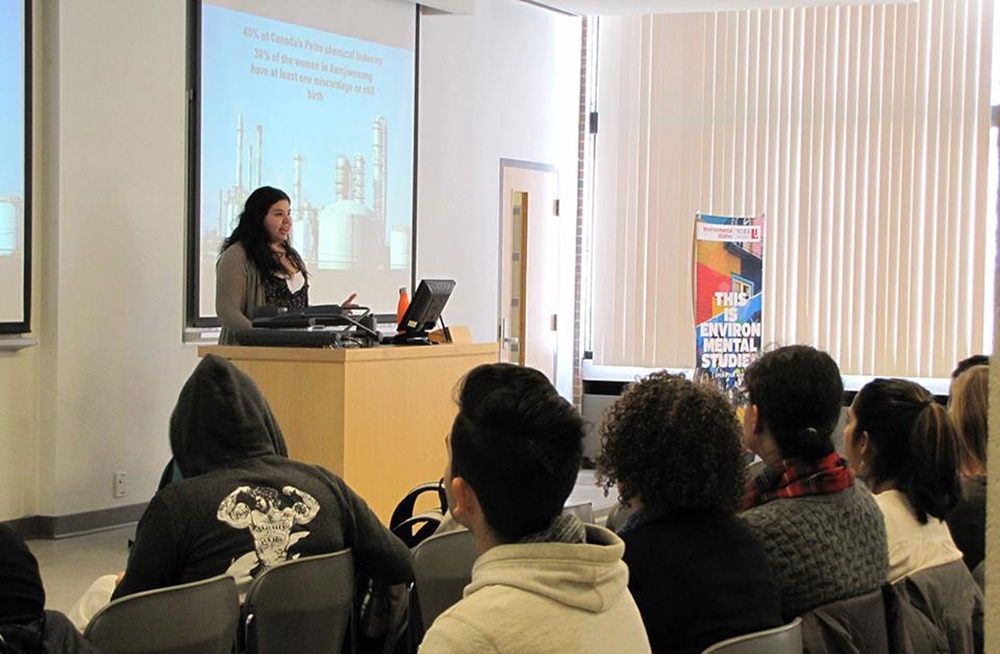Abdeali Saherwala and Ghizlane Zerzkhane | Staff Writers
Featured image: Aamjiwnaang has been called Canada’s Chemical Valley. | Abdeali Saherwala
The Faculty of Environmental Studies hosted an Indigenous Environmental Racism discussion to tackle the impact of Canada’s Chemical Valley on Indigenous communities.
The February 15 event saw Vanessa Gray, organizer and activist for Aamjiwnaang and Sarnia Against Pipelines address how the Line 9 pipeline is affecting the Aamjiwnaang community.
Line 9 was created by Enbridge, Canada’s largest energy delivery company, and runs between Montreal and Sarnia, Ontario.
Gray has been an active campaigner against the toxic effect of both Line 9 and Canada’s Chemical Valley, which she states have caused members in her community to have health issues due to water pollution.
Sarnia, a small town in Ontario, is home to Aamjiwnaang, a First Nation reservation. Aamjiwnaang was originally a Chippewa hunting ground until the British government seized a large amount of First Nations land in 1827 and forced Indigenous people to convert what was left into a First Nation reservation.
Historically, the Chippewa hunting ground provided food and water for around 850 Chippewa people for over 300 years. It is now the most polluted and toxic region in North America.
Canada’s Chemical Valley holds 40 per cent of Canada’s petrochemical industry with more than 60 chemical plants and oil refineries operating every hour of every day.
Sarnia also holds companies that manufacture succinic acid, a chemical used to produce plastic, lubricants, paint, cosmetics and other products.
The chemical valley directly impacts the Aamjiwnaang community with diseases and infections, such as cancer and asthma, while also polluting the land, water and air.
Research has shown that within the Aamjiwnaang community alone, the miscarriage rate reaches 39 per cent, more than double the national rate of 15 to 20 per cent.
“Canada’s autonomy is based basically on the genocide of Indigenous people,” says Gray.
Gray claims that the existence of the Chemical Valley has not been paid due attention by the government and feels that by approving the construction of the pipelines, the government actively endorses them.
In December 2015, Gray, along with Stone Stewart and Sarah Scanlon, shut down the pipeline after cracking the valve open and manually turning off the pipeline’s hand wheel.
All three were later arrested, held overnight and charged with two counts of mischief.
The Sarnia community run a Toxic Tour every summer in which adults and kids from around Canada arrive to the Chemical Valley to experience what it is like to live in a polluted environment.


